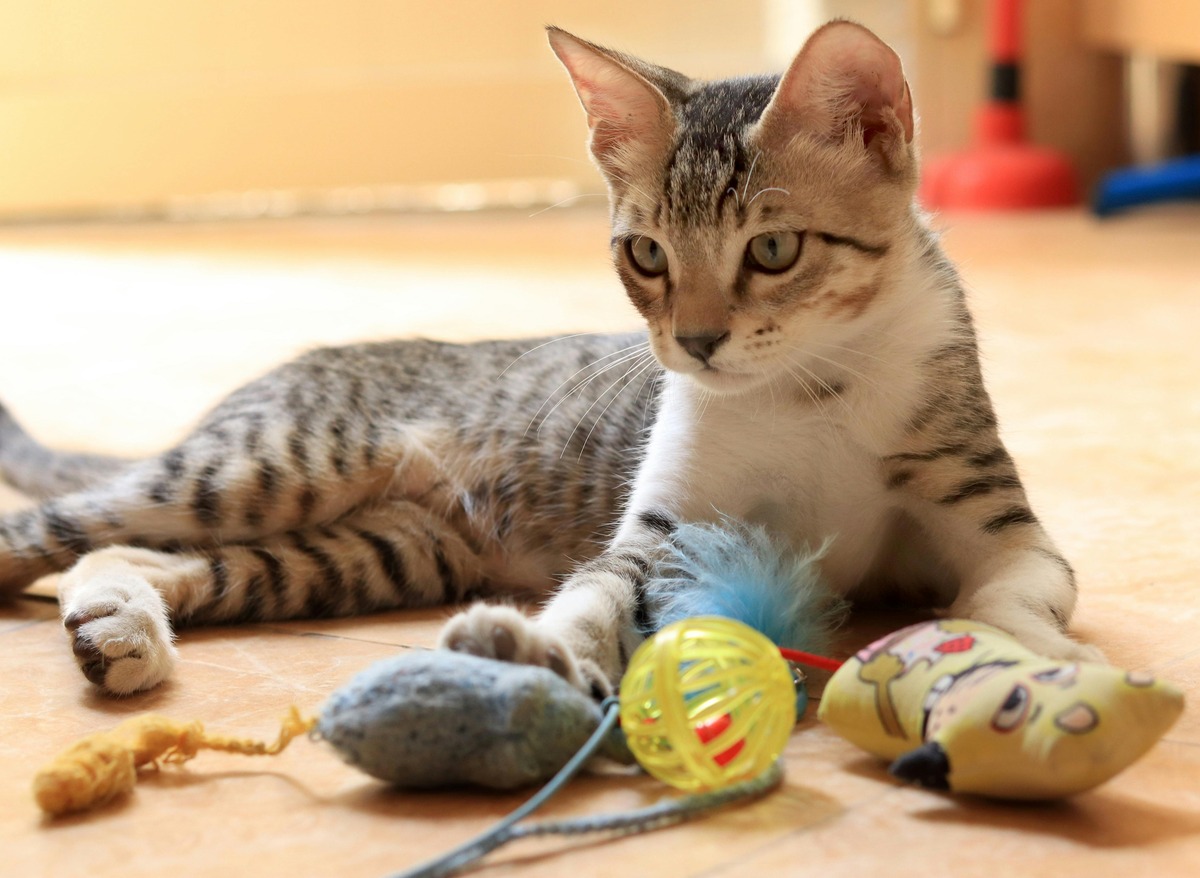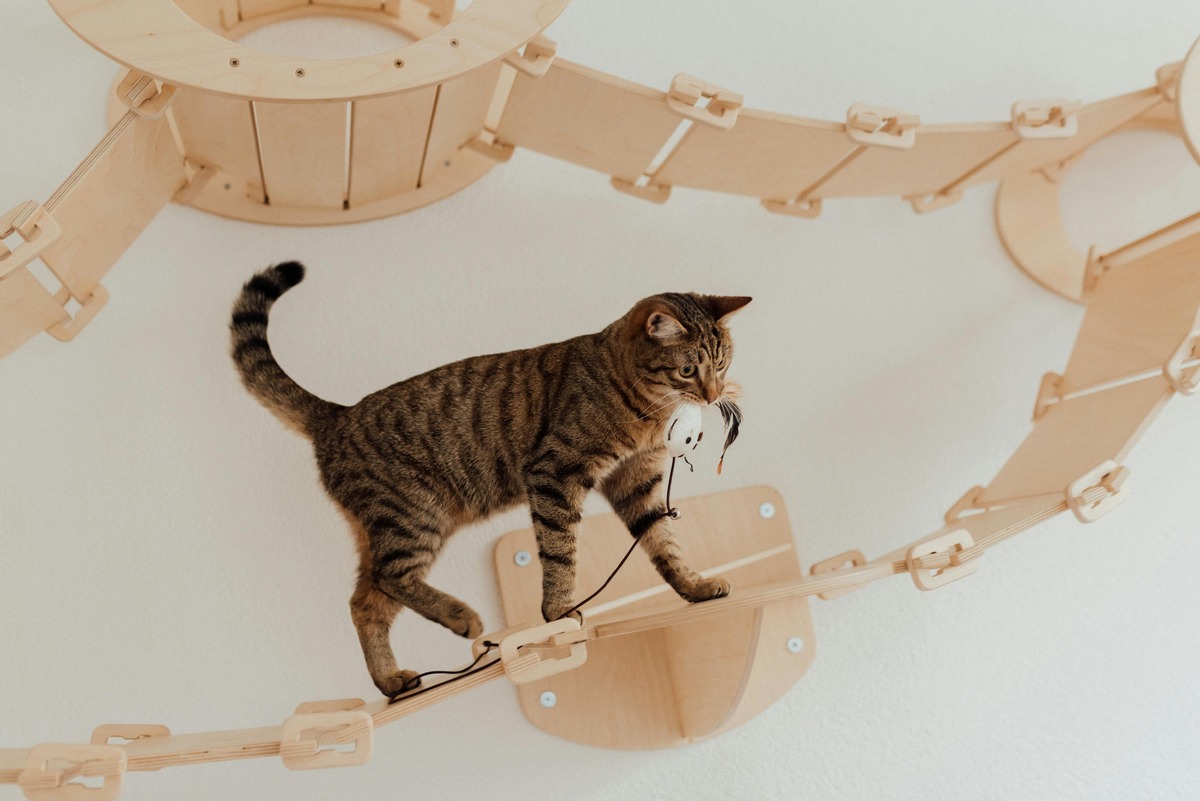
How to Keep Indoor Cats Active and Happy
Indoor cats tend to live longer and safer lives than outdoor cats. However, they also deal with some unique challenges. These can include boredom, weight gain, and not enough stimulation. Without proper engagement, an indoor cat can become lethargic or develop behavioural issues. Keeping your feline friend active and mentally stimulated is crucial to their well-being.
Indoor cats depend on their owners for stimulation. They don’t hunt or explore like outdoor cats. Instead, they need engaging activities at home. Without sufficient engagement, cats may develop obesity, depression, or destructive behaviours like excessive scratching or aggression.
In this guide, we will explore the best toys for cats, activities, and enrichment techniques to ensure your indoor cat stays happy, fit, and entertained.
Why Keeping Indoor Cats Active is Essential
A sedentary lifestyle can lead to various health and behavioural problems. Regular physical and mental exercise helps to:
- Prevent obesity and health issues: Not staying active can cause weight gain. This raises the risk of diabetes, joint problems, and heart disease.
- Boost muscles and keep agility: Moving regularly helps cats stay quick and flexible.
- Reduce stress and anxiety: Boredom or frustration can manifest in destructive behaviours or excessive grooming.
- Curb destructive behaviour caused by boredom: Scratching furniture, knocking items over, or meowing excessively are signs of under-stimulation.
- Enhance overall well-being and lifespan: Active and engaged cats tend to live longer, healthier lives.
Best Ways to Keep Indoor Cats Active

1. Provide a Variety of Toys
Cats are natural hunters, and interactive toys can help mimic their hunting instincts. Some of the best toys include:
- Feather Wands & Fishing Pole Toys: Encourages chasing and pouncing.
- Laser Pointers: Stimulates their prey drive but should be combined with tangible rewards.
- Battery-Operated Moving Toys: Mimics small prey movements, keeping cats engaged.
- Catnip-Filled Toys: Encourages play and relaxation.
- Ball Track Toys: Stimulates curiosity and playfulness.
- Crinkle Balls & Mice Toys: The sound and texture appeal to a cat’s instincts.
- DIY Paper Bags & Boxes: Simple and affordable options for interactive play.
2. Create Vertical Spaces for Climbing
Cats love climbing and observing from high vantage points. Setting up vertical spaces can significantly improve their physical activity and mental engagement.
- Cat Trees & Towers: Provides levels for climbing and resting.
- Wall-Mounted Shelves: Maximises space and allows exploration.
- Window Perches: Lets them observe outdoor activity safely.
- Suspended Hammocks: Encourages relaxation and movement.
- Bridges and Walkways: For adventurous cats, adding ceiling-mounted walkways can provide entertainment.
3. Encourage Interactive Playtime
Engaging with your cat directly strengthens your bond while providing essential exercise. Try these indoor cat activities:
- Daily Play Sessions: At least 10-15 minutes twice a day.
- Chase Games: Using string toys, balls, or lightweight objects.
- Hide-and-Seek: Encourages curiosity and movement.
- Fetch Training: Some cats enjoy retrieving small toys.
- Box Forts & DIY Obstacle Courses: Use pillows, boxes, and tunnels for enrichment.
4. Introduce Puzzle Feeders and Food-Dispensing Toys
Instead of serving food in a bowl, use puzzle feeders to make mealtime more engaging.
- Treat-Dispensing Balls: Encourages physical activity.
- Maze Feeders: Slows down eating while providing mental stimulation.
- DIY Food Puzzles: Hide kibble in small boxes or paper rolls for added challenge.
- Treasure Hunts: Scatter kibble around a room to stimulate foraging behaviour.
5. Rotate and Introduce New Toys Regularly
Cats can get bored with the same toys over time. Keep things exciting by:
- Rotating toys every few weeks.
- Introducing new textures, shapes, and sounds.
- Hiding toys around the house to encourage “hunting.”
- Freezing toys with catnip inside for a fun sensory experience.
6. Provide Scratching Posts and Interactive Furniture
Scratching is essential for a cat’s physical and mental health. Consider:
- Tall Scratching Posts: Helps stretch and maintain claws.
- Cardboard Scratchers: Affordable and disposable.
- Interactive Furniture: Such as tunnels and small obstacle courses.
- Sisal Rope Scratching Poles: Durable and attractive for scratching.
7. Use Safe Outdoor Exploration Options
If your cat craves the outdoors, consider controlled outdoor activities:
- Leash and Harness Training: Allows for safe outdoor walks.
- Catio (Cat Patio): An enclosed outdoor space where they can explore safely.
- Window Bird Feeders: Provides endless entertainment without risks.
- Enclosed Garden Play Areas: A fenced-in area with supervised playtime.
8. Adopt a Companion
If your cat likes other animals, getting a second cat or a friendly small dog can add fun and social time. Ensure that introductions are gradual and positive.
How to Exercise a Lazy Cat

Some cats are naturally more relaxed and require encouragement to stay active.
- Start with Short Play Sessions: Gradually increase duration as they become more engaged.
- Use Irresistible Toys: Some cats prefer certain textures or movement styles.
- Incorporate Food Motivation: Use treats to encourage movement.
- Experiment with Different Activities: Find what excites them most.
- Use Clicker Training: Teach tricks like “high-five” or “jump” to encourage movement.
- Introduce Light Play: A flashlight beam can encourage movement in a dark room.
Common Mistakes to Avoid
- Neglecting Daily Play: Regular engagement is key to a happy indoor cat.
- Forcing Activity: Let your cat choose their preferred play style.
- Ignoring Mental Stimulation: Physical play is essential, but so is mental engagement.
- Not Providing Vertical Spaces: Cats need climbing areas to feel secure and active.
- Overfeeding Without Exercise: Leads to obesity and health problems.
- Leaving Toys in the Same Location: Move toys around to stimulate curiosity.
- Using Unsafe Materials: Avoid small parts that could be ingested.
Conclusion
Ensuring your indoor cat stays active and mentally stimulated is crucial for their overall health and happiness. With a mix of interactive play, climbing spaces, puzzle feeders, and new toys, you can create an enriching environment that keeps them engaged.
Each cat is unique, so experiment with different activities to find what excites them most. With the right approach, your feline friend will lead a happy, healthy, and enriched life indoors!
Using these techniques, you can make your home exciting and fun for your cat. This will help keep your cat happy and healthy for years.